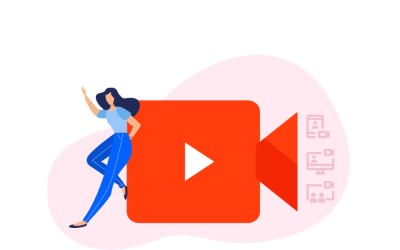What Today SEO Means

Google had to change and adapt to maintain its spot as the number one search provider. And to do that, it had to clamp down harsh on those who were gaming its system and penalize sites that were cheating to get to the top spot.
It did this by looking for obviously ‘spammy’ strategies and de-indexing the responsible sites or downgrading them.
Sites with keywords in their URL no longer enjoyed the same advantage.
Sites with huge numbers of inbound links from low-quality websites were de-indexed Sites caught buying links were de-indexed .Sites that stuffed keywords were severely punished.Sites that have lots of backlinks with the same anchor text were treated as highly suspect
And the list goes on!
Meanwhile, Google started to show preference toward sites that were longer, that linked out to other quality resources (which previously would have hurt your SEO) and more. These changes came in the form of algorithm updates which had recognizable animal names and which got a lot of press from the internet marketing community at the time.
These were ‘penguin’, which was designed to reduce the effectiveness of unnatural backlinks, and ‘panda’, which was designed to favor sites that looked high quality. Google doesn’t want a website owner to be able to artificially climb its SERPs. Rather, Google wants websites to climb the ranks only when they are genuinely valuable and popular with the audience.
It wants to see natural, organic links that you haven’t paid for and it wants to see deep, relevant and interesting content. The old techniques that were once used to spam Google became known as ‘black hat SEO’ and the industry entered a dark period.
The Death of SEO?
It’s hard to overstate just what an impact these algorithm changes had on the SEO industry at the time – and on countless other industries as well. These changes ended up completely de-indexing massive websites overnight. Sites that had followed conventional wisdom to get to the top spot on popular SERPs were now completely de-indexed, cutting off the vast majority of their traffic and sales.
This led many to proclaim that SEO was dead. It was no longer possible to game the system because you would be penalized for buying links or for stuffing keywords. And even if someone could break Google’s new algorithm and work out a new way to game the system, it would only be a matter of time until Google changed its algorithms again.
The industry as a whole was in trouble and SEO became a dirty word. Many people felt that SEO and black hat SEO were synonymous. And more and more people began to turn to social media marketing, with the likes of Facebook and Twitter massively on the rise.
But was SEO really dead?
Not at all – it was just going through a metamorphosis. SEO is not the techniques we use to get our sites to the top of Google. SEO is simply the objective of getting to the top of Google. Any technique you use to try and get more attention from Google could be considered SEO.
So, if Google wants us to create a ‘high quality website’, then ‘creating a high quality website’becomes SEO.
The hard part is just unravelling what Google’s idea of a high quality website should look like!
Examples of Modern Approaches to SEO
Keyword research is still useful for example but we now know that Google doesn’t want us to overly stuff our website with those search terms. Instead, the recommendation hovers at around 1-2% keyword density. If you write a long article and include the search term a few times, then that should be enough as long as it’s also in your code a little, or in your file name.
It’s also worth noting that Google looks for keywords in specific places in your content and gives those extra-value. Google will consider it a strong sign if your keywords are used in your headers, or in the first paragraph of your content.
Google also looks for synonyms though and related language – which is something that we’ll discuss more in this article. And it no longer cares how many links you can get – it cares far more about how high quality those links are. If your links are from lots of highly trusted websites, then you’ll find it does great things for your ranking. Google is also now looking at things like bounce rates – how long someone spends on your website. And it is looking at how your site renders on mobile and how quickly it loads.
You can now get penalized for typos and mistakes. And Google is now looking at social sharing signs. If you have lots of ‘+1s’ from Google+ for example, then this can have a large positive impact. In short, Google is looking for signs of quality, relevance and great design. At the end of the day, Google does not care about you as a content creator. You are not Google’s customer! Google’s customer is the end user who searches for a key phrase because they want to get relevant information or find the answer to a question.
So if you forget the specifics and instead make your aim to deliver high quality content, consistently targeted towards a specific subject matter, then your goals will be aligned with Google. That means that Google will want to share your content with its users. And it means that each update and change that Google makes should actually benefit you as a creator. This is what good SEO is about today! Forget trying to ‘trick’ Google and instead think about your users and think about working with Google!







